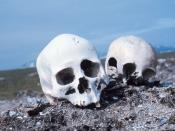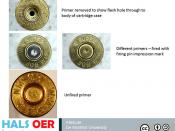In this essay, I have chosen to analyse human osteology in forensic and archaeological studies, covering certain techniques and methods which are involved and also going through different time scales in which explains how forensics and archaeology itself has rapidly progressed over the period of time.
First of all, human Osteology is the study of human bones. There are three areas in which knowledge of human osteology is often applied. Scientists perform the investigations and employ their knowledge of the human skeleton in recovering and interpreting the bones.
The work behind Osteology is often aimed at the identity of the relatively recently deceased and it's usually done in legal context. Through this work most often a court of law, is called forensic osteology is a division of forensic anthropology. (White et al., 2011, p. 1)
It has recently become fashionable to refer to the study of human remains from archaeological context as 'bioarchaeology.'
Archaeologists concentrate on cultural remains of former human occupations, but they stand to gain a great deal of valuable information from skeletal remains of the ancient inhabitants. The goal of forensic osteology often involves identification of an unknown individual. The process of personally identifying the remains of the recently dead individually is called 'individuation.' However human osteologists working in archaeological contexts usually cannot perform such personal identification. (White et al., 2011)
To get to the grips of human osteology, the whole genre lies between forensic anthropology, which is the field of study that deals with the analysis of human skeletal remains resulting from unexplained deaths. Anthropology itself is the study of biological and cultural aspects of all humans in all places in all times. Biological anthropology is the subdivision of discipline, the study of biological evolution and the development of humans. (Byers N. Steven 2001)
Since the...


